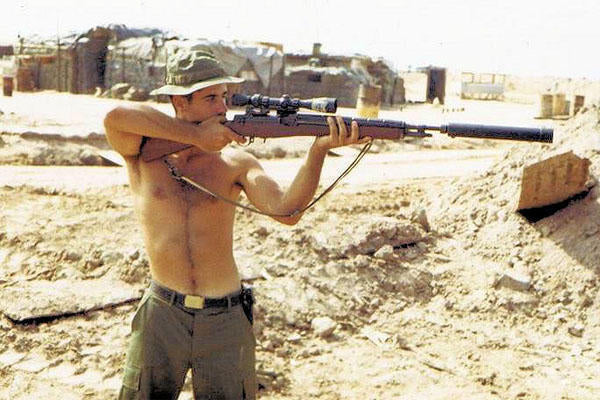With rifle in hand, the only time you’d fhim without his signature white feather in his cap was while he was “worming” towards a target.
From a young age, Carlos Hathcock of Wynne, Arkansas dreamed of being a soldier. With his Father’s souvenir brought back from WWI, young Carlos would take to the woods with the old Mauser, accompanied by the family dog of course, and pretend to fight off the invading Japanese. Through his teenage years he helped his family with a trusty, single-shot J.C. Higgins rifle by hunting for small game. At just 17 years old, Carlos took his passion for hunting, his thrill of playing war and combined that with his long time desire to become a serviceman and enlisted in the Unites States Marine Corps in November of 1962.
Before long, Hathcock was showing what his childhood experience had gained him and was winning shooting contests off the coast of Lake Erie at Camp Perry. Soon thereafter Carlos would go on to win the Wimbledon Cup shooting championship in 1965, the most prestigious aware for long-range rifle at the time.
It would be the following year that Hathcock would first set foot on the battlefield. Deploying first as military police, Carlos quickly volunteered for combat and likely because of his recent success, was assigned to the 1st Marine Division Sniper Platoon. His time at Hill 55, just South of Da Nang, Vietnam, is allegedly where Carlos Hathcock first affixed his lucky charm and forever carry the name “White Feather.”
The ornament had its time and place, and while in pursuit of a North Vietnamese Army General, the feather would remain out of sight. For four days, Hathcock spent his hours inching closer and closer, over a distance of 1500 yards, to move to a treeline close enough to engage. “Over a time period like that, you could forget the strategy,” Carlos explains. “Forget the rules and end up dead. I didn’t want anyone dead, so I took the mission myself, figuring I was better than the rest of them, because I was training them. There were two twin .51s next to me. I was worming on my side to keep my slug trail thin. I could have tripped the patrols that came by.” Hathcock waited for the General to step out onto his porch. Moments later, as Carlos watched through his scope from 700 yards away, the General lay dead with a hole through his chest.
For three days enemy soldiers looked for Carlos and for three days Carlos made his way back to base. Hathcock’s commanding officer remembers him well. “Carlos became part of the environment,” explains Edward Land. “He totally integrated himself into the environment. He had the patience, drive, and courage to do the job. He felt very strongly that he was saving Marine lives.”
Perhaps Hathcock’s most memorable shot was one that meant so much to him. His target was labeled ‘Apache’ and appropriately so. “She was a bad woman,” Carlos recalls. “Normally kill squads would just kill a Marine and take his shoes or whatever, but the Apache was very sadistic. She would anything to cause pain. I was in her backyard, she was in mine. I didn’t like that. It was personal, very personal. She’d been torturing Marines before I got there.” In early November of 1966, the Apache captured a fellow Marine and tortured the soldier within earshot of Hathcock’s unit. “She tortured him all afternoon, half the next day,” says Carlos. “I was by the wire… He walked out, died right by the wire.” The private had been skinned by Apache, his eyelids removed as well as his fingernails, and if that weren’t enough to satisfy a demon, she’d castrated him before releasing him. Hathcock did what he could to comfort the private, but it was far too late to save him. His next target was clear. Carlos recalls his view from 700 yards away. “We were in the midst of switching rifles. We saw them. I saw a group coming, five of them. I saw her squat to pee, that’s how I knew it was her. They tried to get her to stop, but she didn’t stop. I stopped her. I put one extra in her for good measure.”
These are just a couple of many stories of this historical U.S. Marine. In late 1969, Carlos Hathcock recovered from being knocked unconscious by a landmine. Despite receiving burns over 40 percent of his body, the brave soldier rose to pull seven of his fellow Marines from what was left of the burning vehicle. While his career as a sniper would be taken by the mine, Quantico would become his home and he established the Marine Sniper School. Years later he’d fight a new battle with Multiple Sclerosis and ultimately lose the fight, but not before receiving the Silver Star in 1996 for his heroics.

